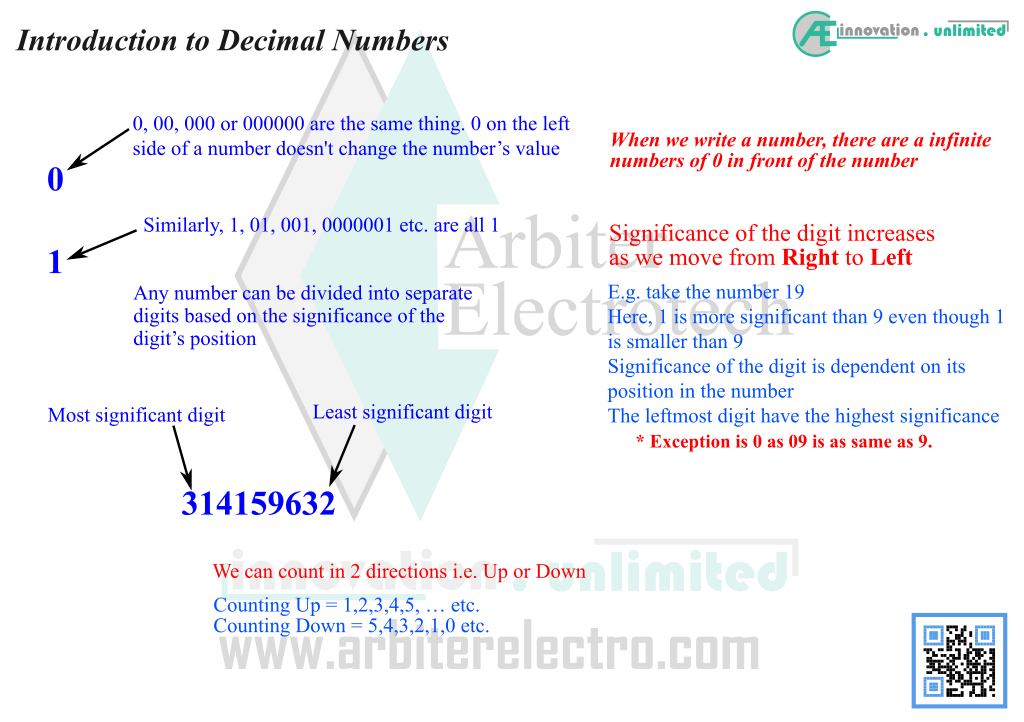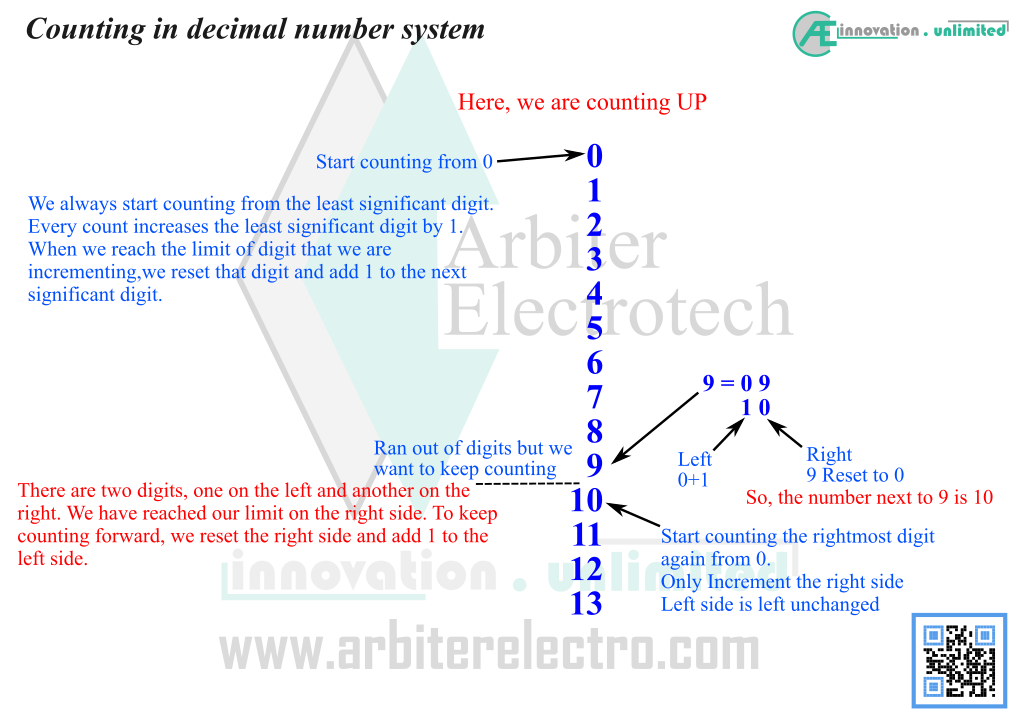H. Rahman2023-07-09T20:02:50+06:00
Introduction
A number system refers to a system of numbers that can be used to keep count when needed. There are several different number systems in mathematics. Each number system has a certain number of fundamental digits that are used to count using that specific number system. The number system that we use in everyday life is called “Decimal” number system. Deci means 10. There are 10 digits in a decimal number system (0 to 9 as in 0,1, 2, 3 … 9). These ten numbers, starting from 0 to 9, are fundamental numbers. These numbers are unique in value and in symbol. No numbers from 0 to 9 looks like each other. If you want to count a number that exceeds the highest value of the fundamental number of the number system, you must combine multiple fundamental numbers to do so. For example, if we want to count up to five, we will go like 1, 2, 3, 4 & 5. Each numbers from 1 to 5 are unique. However, if we want to count up to ten, we go like 1, 2, 3.… 8, 9, 10. Note that until 9, we were using fundamental number. But 9 is the limit of decimal number system. 9 is the highest value fundamental number. To count beyond 9, i.e. the limit of the decimal number system, we have to combine two fundamental numbers. Therefore, 10 consists of two fundamental numbers, 1 and 0, placed side by side.
The number system that we use most extensively in the digital electronics and in computing is called “Binary”. Bi means 2, and binary number system has only two digits i.e. 0 and 1. Everything in binary is counted using only 0 and 1. Another widely used number system is Hexadecimal. Hex means 6 and deci means 10. Adding 10 & 6 gives 16. You can probably guess that hexadecimal number system has 16 digits on it (Hex = 6, deci = 10). We will discuss it later in the chapter.
Decimal Number System
Before learning a new number system, let’s start with the known system. We use numbers to count. So how do you count in decimal? You would go like 1, 2, 3, 4, 5, 6 etc. But what is the exact process? How do you know that 10 comes after 9 or 130 comes after 129? The answer lies in the process that is used to count. The process is same for all the number systems. So, if you know the process for counting in decimal, you can also apply the same technique on binary and hexadecimal. In the explanation below, we are starting simple with decimal number that everyone uses everyday.

The process of counting is simple. We can either count up or count down. Counting up refers to as incrementing the value of the present count by a certain factor. Counting down would reduce the present count by a certain factor. Counting Down is similar process except the values of number goes down with each count. However, after the counting number reaches the lowest fundamental number, we have to add a negative sign before the number. This would signify that the counting procedure is taking place for a number which is smaller than 0. Any and all numbers greater than 0 has a positive sign before it. However, we don’t show the sign. By default, if there is no sign before any number, it is assumed that the number is positive.
Steps:
The steps shown here assumes that the counting process needs to go beyond the highest number of the number system i.e. count>9
1. Start counting from the lowest value number of the number system (i.e. 0)
2. Note that the count begins with a single digit number.
3. Keep counting until you reach the highest value number of the system.
4. Since we have reached the highest value number of the number system, we need to increase the number of digits in the number.
5. We simply reset the leftmost digit to 0 and add 1 to the digit after the leftmost digit (refer to the diagram).
6. We continue counting by incrementing the leftmost digit.
7. When the leftmost digit again reaches limit (9), we again reset the leftmost digit to 0 and add 1 to the digit after the leftmost digit
8. The process is repeated until we require
Use the steps mentioned above with the diagram below to get a better understanding of the theory.



Leave a Reply